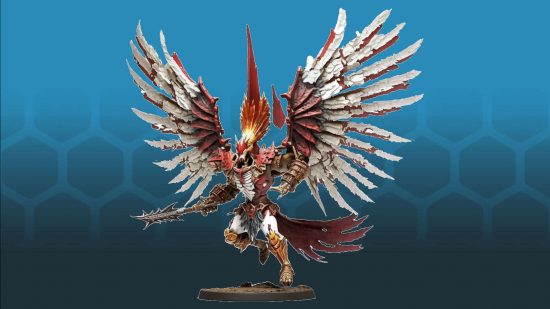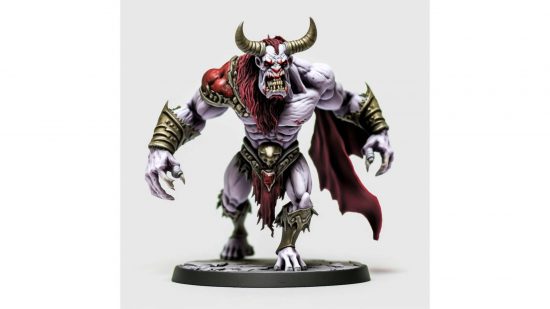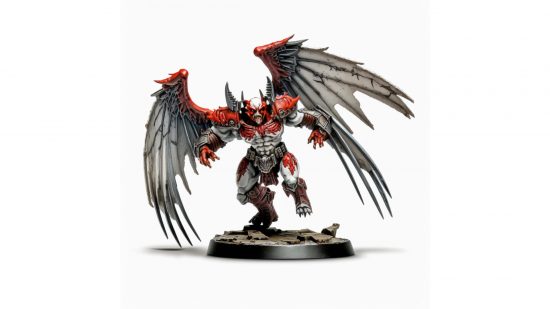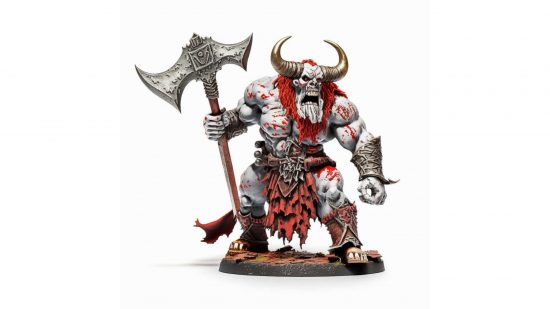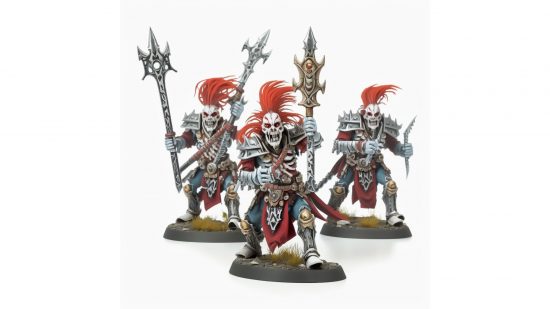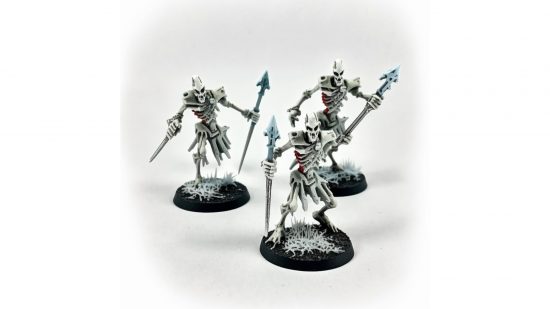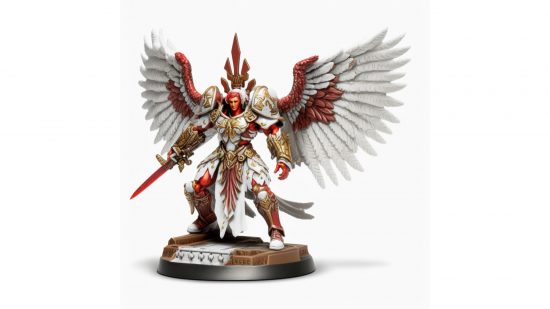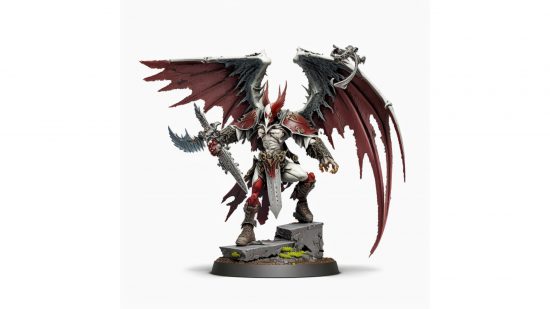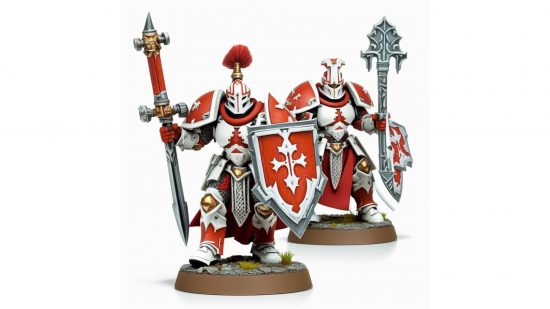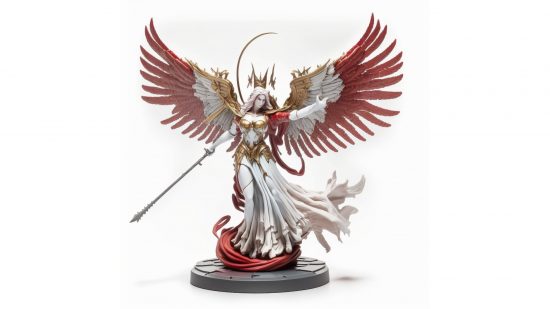The narrative and model photos for this imaginary, yet believable Warhammer fantasy army were created using two AI tools, the ChatGPT text generator and the Midjourney image-making AI. RPG blogger Michael Raston uploaded the results to his blog The Lizard Diaries on Friday, describing the process he used to get the AIs to do what he wanted.
So far the army has ten units, each with a name, description, and list of strengths and weaknesses generated by ChatGPT. They’re illustrated with pseudo-photos created using Midjourney. The faction has a mixture of angelic, infernal, and bull-like features, with hints of the Chaos Slaves to Darkness, Ossiarch Bonereapers, and even Protectorate of Menoth zealots from Privateer Press’ wargame Warmachine.
As usual for AI images the fingers are all wrong, but these would otherwise pass muster as a weird new Age of Sigmar army.
The faction’s background is cool, if a little generic: “the angelic order of the Celestial Realm waged a great war against the demons of the Abyss… victory came at a great cost. Many of the Angels had been corrupted by the Abyssal energies… The Celestial Realm, fearing the consequences of this corruption, banished these fallen angels to the underground seas that lay beneath the surface of their world”.
Fallen Stormcast Eternals (or perhaps some earlier, angelic race from the Age of Myth) banished to the oceanic depths alongside the Idoneth Deepkin would probably work in Age of Sigmar’s hodge-podge fantasy universe.
An earlier post from Raston explains how to get AI text generators to describe wargaming units, as if they were entries in a Warhammer 40k codex: tell the AI you want it to describe a certain number of “fantasy tabletop wargaming [description] units, listing strengths, weaknesses, weapons used and a general description for each”. Inserting a description between the words “wargaming” and “units” tells the system the theme for the faction.
Raston’s initial experiments created Orcs and Skeletons. His post on Friday explains how he got it to make more unusual units, including “Laughing Maniacs… Strengths: Fear-inducing, good against lightly armored foes” and “Saltwater Revenants – These undead have spawned from the salty oceans of the underground seas and are resistant to water-based attacks”.
Raston started by picking five Magic the Gathering cards using Scryfall’s random card tool: the Angel of Sanctions token, Punish the Enemy, Underground Sea, Tahngrath’s Rage, and Hideous Laughter.
He identified the key concepts from the cards as “angels, flying, zombies, fire swords, punishment, red hair, plate armour, underground seas, caverns, salt, bulls, horns, wings, laughter magic, laughing, hideous, deafening”, and turned them into a lengthy prompt for the AI.
That elaborate prompt was necessary because of the way current text generation tools work. ‘Large language model’ systems identify patterns in existing internet text: content about wargaming comes from Warhammer 40k wikis, the Warhammer community website, and pages like Wargamer’s Warhammer 40k faction guides.
When you ask the AI for something, it makes a best guess of which patterns you want its answer to include, and produces new text that obeys the patterns.
Tell ChatGPT to describe Dwarf units from a miniature wargame and it will identify the patterns in text on web pages that describe Warhammer the Old World, Lord of the Rings: Battles in Middle Earth, the Kharadron Overlords and Fyreslayers in Age of Sigmar, and so on, and create something that matches those patterns. To get something more innovative, you need to introduce extra prompts – hence Raston’s need for something juicy to feed to the algorithm to make it produce interesting designs.
Raston says he prefers to play ‘free kriegspiel’ style wargames, a very traditional version of wargaming that requires a third player as a referee – this role evolved into the DnD Dungeon Master when DnD evolved out of wargaming, nerd history buffs. Raston has published his homebrew rules for a kriegspiel / Warhammer hybrid for free on his blog.
